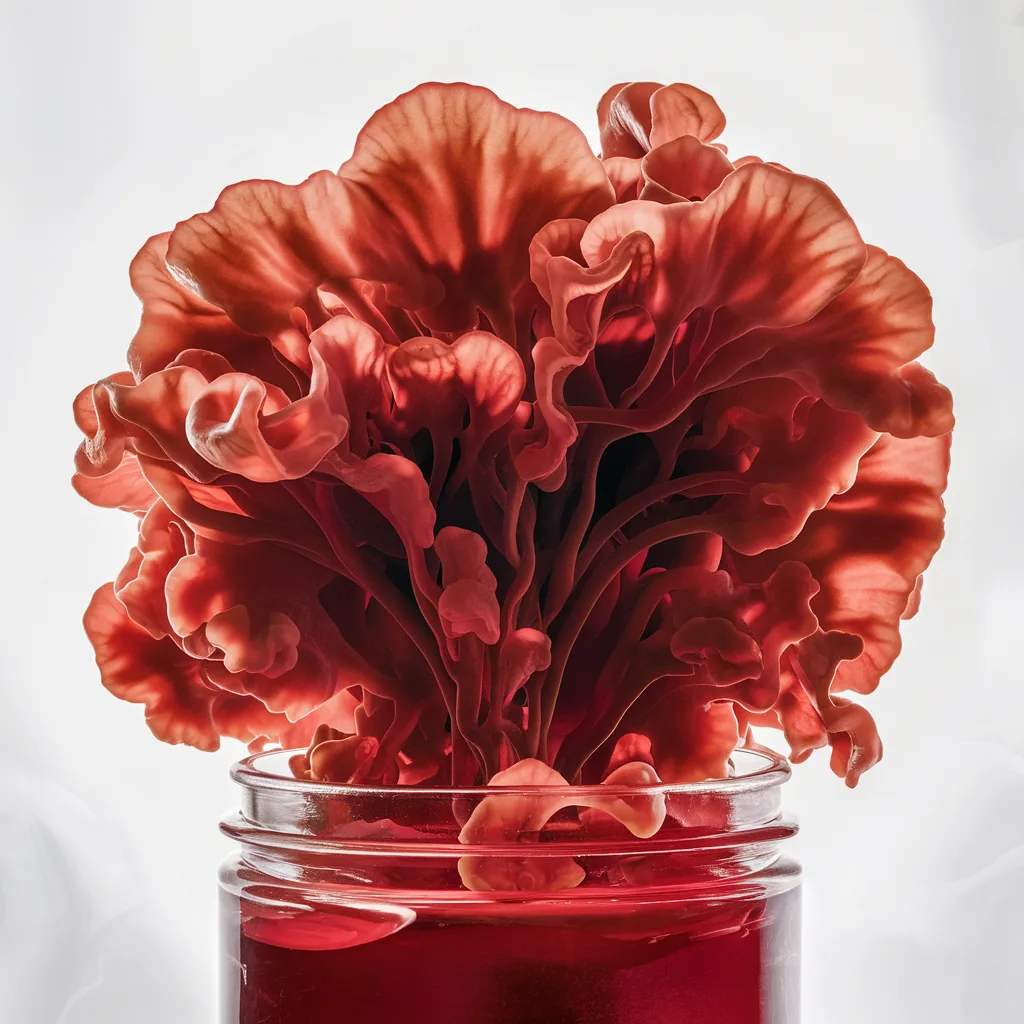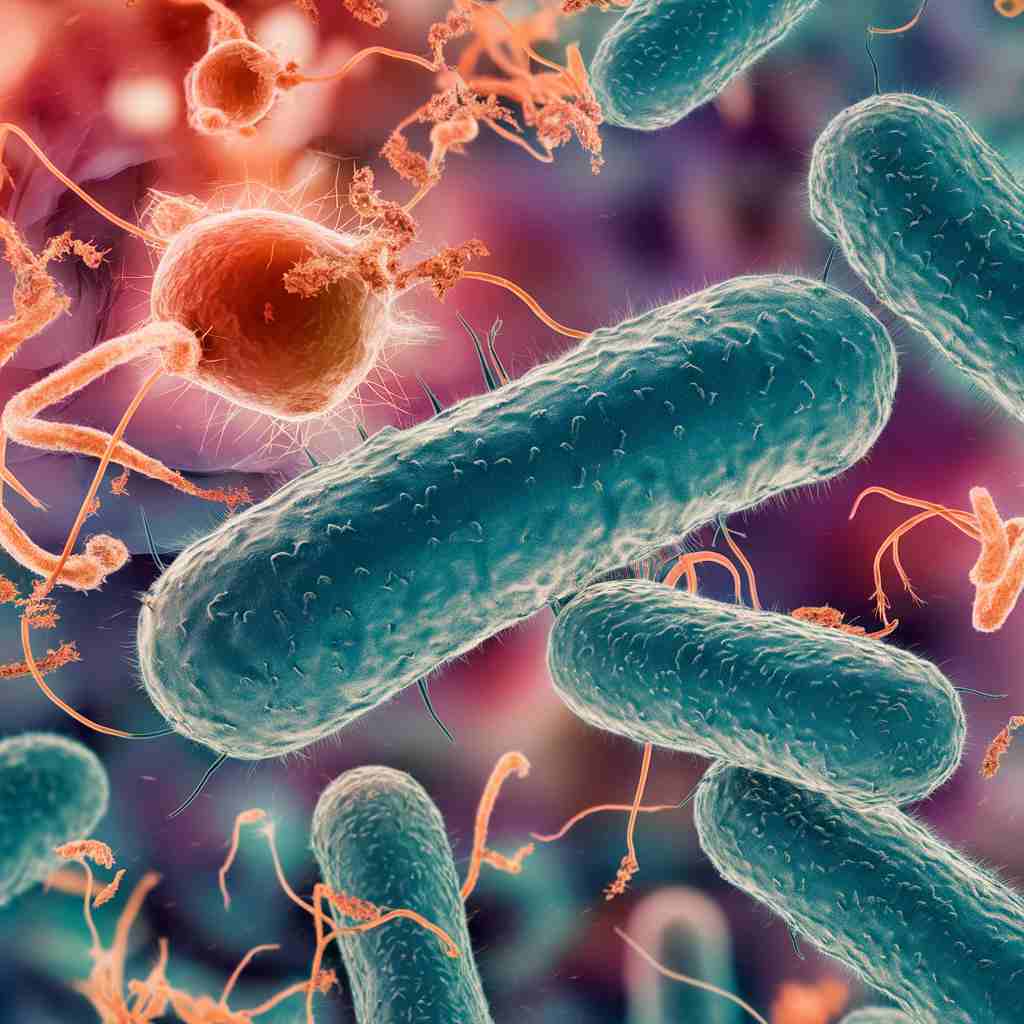Agar
Agar is a gelatinous material that comes from seaweed and is mostly used in microbiology as a culture media solidifier. As a thickening agent for soups, sauces, and desserts, it is also utilized in food as a vegetarian substitute for gelatin. Agar is valued for its resilience to microbial destruction and its capacity to form a solid gel at comparatively low concentrations.
Table of Contents
Ashdown’s Agar

A selective and differential agar medium called Ashdown’s agar is used to isolate and cultivate Salmonella and Shigella species from clinical samples, especially stool specimens. Various substances present in it promote the growth of Shigella and Salmonella bacteria while inhibiting the growth of normal gut flora. Bile salts, dyes, and other selective agents are some examples of these. To distinguish lactose-fermenting colonies from non-lactose-fermenting colonies and help identify the target pathogens, the medium additionally contains lactose and pH markers. An invaluable resource for the laboratory diagnosis of intestinal infections is Ashdown’s agar.
Composition
A specialized culture medium called Ashdown’s agar is used to isolate and identify species of Shigella and Salmonella from clinical samples, especially stool specimens. Peptones, lactose, yeast extract, sodium chloride, sodium desoxycholate, crystal violet, and neutral red are usually included in its composition, and they are all suspended in a solidifying agent such as agar. For bacterial growth, peptones and yeast extract supply vital nutrients, and lactose acts as a fermentable substrate. While sodium desoxycholate and crystal violet limit the growth of Gram-positive bacteria and so selectively promote the growth of target pathogens, sodium chloride aids in the maintenance of osmotic equilibrium. Lactose fermenters can be distinguished with the help of neutral red, which serves as a pH indicator.
Principle
Ashdown’s agar works on the basis of its selective and differential qualities, which make it possible to separate and identify species of Shigella and Salmonella from intricate clinical materials like stool specimens.
Selective principle
Ashdown’s agar is formulated with specific agents, such as bile salts (like sodium desoxycholate) and dyes (like crystal violet), which prevent the development of many Gram-negative and Gram-positive bacteria but promote the growth of Shigella and Salmonella species. This selectivity facilitates the isolation of the target pathogens by inhibiting the growth of the sample’s normal flora.
Differential Principle
In addition to a pH indicator (neutral red), lactose is a fermentable carbohydrate in the medium. While some Shigella and Salmonella bacteria may ferment lactose, others cannot. Lactose fermentation results in acidic byproducts, which raise pH levels and are picked up by the neutral red indicator. The pH shift causes lactose-fermenting colonies to look red or pink, while non-lactose fermenting colonies appear colorless.
Ashdown’s agar’s combination of selective and differential qualities enables the development and differentiation of Shigella and Salmonella species according to their capacities for lactose fermentation and other biochemical traits. This helps in the diagnosis and treatment of gastrointestinal diseases by making it easier to identify and isolate these enteric bacteria from clinical specimens.
Preparation of Ashdown’s Agar

Weigh out the required amounts of peptones, lactose, yeast extract, sodium chloride, sodium desoxycholate, crystal violet, neutral red, agar, and distilled water in accordance with the particular formulation before starting to make Ashdown agar. Dissolve the peptones, lactose, yeast extract, sodium desoxycholate, sodium chloride, crystal violet, and neutral red in distilled water in a large flask or beaker, stirring constantly until the mixture completely dissolves. With the use of a pH meter and the proper acid or base, bring the solution’s pH down to the desired level, usually 7.4. After the mixture is homogeneous and the pH has been adjusted, add the agar and stir gently over low heat until the agar dissolves completely. Autoclave the medium for 15 minutes at 121°C to sterilize it.
Once sterilized, let the medium cool to a temperature of around 50–55°C. Transfer the sanitized agar to a depth of approximately 4–5 mm in sterile Petri plates, and then leave it to solidify either at room temperature or in the refrigerator. When the time comes to utilize the prepared agar plates, store them somewhere cool and dry, away from bright light. Make sure to maintain sterility throughout the process to avoid infection. By adhering to this methodology, Ashdown agar’s effectiveness and dependability for the separation and identification of Shigella and Salmonella species from clinical samples are guaranteed.
Results of Ashdown’s Agar
B. Colonies of pseudomallei
Colonies of B. pseudomallei grown on Ashdown’s Agar have unique traits.
Violet or purple in colour.
Shape: Extremely rough or wrinkled.
Round in texture.
These characteristics aid in setting them apart from other bacteria.
B. thailandensis

It’s interesting to note that identical purple colonies on Ashdown’s Agar are also produced by the closely related bacterium B. thailandensis.
Consequently, more investigations are required to positively identify B. pseudomallei in particular.
Uses of Ashdown’s Agar
In microbiology, Ashdown’s agar is used for a number of crucial tasks, chief among them being the separation and identification of Salmonella and Shigella species from clinical samples, especially stool specimens. Here are a few important applications
Isolation of Salmonella and Shigella
Ashdown’s agar is a type of selective medium that favours the development of Shigella and Salmonella species while suppressing the growth of other bacteria and the majority of normal flora. This makes it possible to isolate these enteric pathogens from complicated clinical samples in a targeted manner.
Differentiation of Lactose Fermenters
Ashdown’s agar, which contains lactose plus a pH indicator, makes it possible to distinguish between colonies that ferment lactose and those that do not. This helps identify Salmonella and Shigella strains at an early stage based on their capacity to digest lactose and generate distinct colony colours.
Detection of Hydrogen Sulfide Production
On Ashdown’s agar, some Salmonella strains cause the production of black-centered colonies by producing hydrogen sulphide. This may help distinguish between different Salmonella serotypes.
Initial Screening
Ashdown’s agar offers a practical and affordable way to screen clinical samples for the presence of Shigella and Salmonella species in the first place. Ashdown’s agar positive results can direct additional confirmatory testing and diagnostic techniques.
Epidemiological Studies
Ashdown’s agar can isolate Salmonella and Shigella strains from epidemic or surveillance samples quickly and selectively, which is useful in epidemiological investigations of enteric illnesses. This makes it easier to monitor the spread of infections and put the right controls in place.
In clinical microbiology laboratories and public health settings, Ashdown’s agar is a vital tool because it is a versatile medium with unique selective and differential qualities designed for the isolation and preliminary identification of Salmonella and Shigella species.
Frequently Asked Questions
What is Agar?
Agar is a gelatinous material that comes from seaweed and is mostly used in microbiology as a culture media solidifier. As a thickening agent for soups, sauces, and desserts, it is also utilized in food as a vegetarian substitute for gelatin. Agar is valued for its resilience to microbial destruction and its capacity to form a solid gel at comparatively low concentrations.
Define Ashdown’s Agar in short?
Ashdown’s agar is formulated with specific agents, such as bile salts (like sodium desoxycholate) and dyes (like crystal violet), which prevent the development of many Gram-negative and Gram-positive bacteria but promote the growth of Shigella and Salmonella species.
What are the result of Ashdown’s agar?
The result of Ashdown’s Agar
B. Colonies of pseudomallei
B. thailandensis
Related Articles




